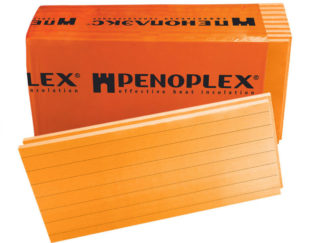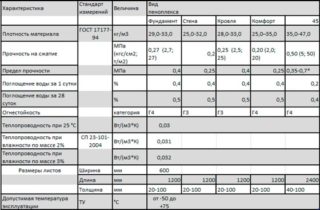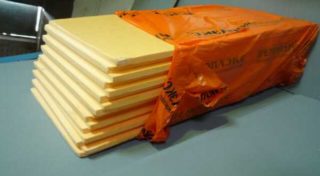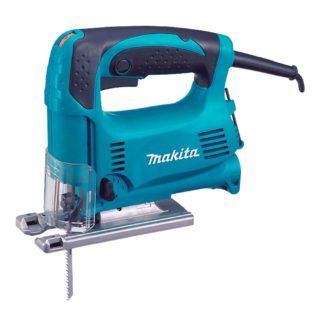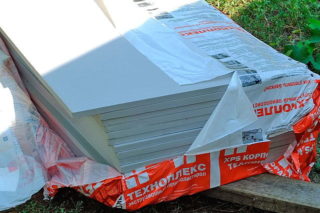Penoplex insulation - tiled material for a heat-insulating layer. This is a type of foam, but significantly superior to it in most parameters, primarily in terms of strength and density. To properly insulate walls, roofs or foundations with foam, you need to know what the material is used for and how to mount it correctly.
Insulation characteristics
The material is made on the basis of finely divided polystyrene. It is mixed with special additives and heated. Due to the evolution of gas under the influence of high temperatures, the molten mass of polystyrene foams. At the final stage of manufacturing, the foam is squeezed out of the extruder, after which it cools evenly on the conveyor belt, taking the form of a plate.
The result is an extruded polystyrene foam called penoplex or penoflex - a heater with a uniform structure and pore size less than 0.3 mm. The bulk of the building material falls on the gas filler, which gives a high degree of thermal protection, as well as low weight with significant dimensions. Insulation sheets are orange in color and usually have typical sizes: length - 120 or 240 cm, width 60 cm and thickness from 20 to 100 mm.
Technical indicators of building materials:
- Thermal protection. Plates have good thermal insulation characteristics. The foam has a low coefficient of thermal conductivity due to the cellular structure of 0.03 W / m · ºK.
- Moisture resistance. Due to the fact that polystyrene foam does not absorb moisture, it can be successfully used for thermal insulation of the roof, basement and foundation. The level of water absorption is 0.5 percent by volume per month.
- Chemical resistance. Does not react with most building materials, excluding solvents.
- Resistance to mechanical damage. Tolerates high loads. For example, at 10 percent linear deformation, the strength of the material is not less than 0.2 MPa.
- High compressive strength and kink - 0.27 MPa. This quality makes it possible to use panels not only as insulation, but also as building material, not subject to the formation of structural cracks.
- Wide temperature range. The average value of operating temperatures at which the foam does not lose its mechanical qualities and physical properties is from minus 50 to plus 75 degrees. If the material heats up more during operation, it can melt, and in frosts below 50 degrees the insulation will become brittle and brittle.
Mold and fungi on penoplex do not develop. Only rodents that can easily make moves in the material can damage it. With proper installation and operation, the insulation will last 35–50 years without losing thermal insulation qualities.
Advantages and disadvantages of the material
The main advantage is the low thermal conductivity of the foam. It creates a kind of thermos effect. The foam plastic panel with a thickness of 20 mm according to the characteristics of insulation is equivalent to two layers of mineral wool or a wall lined with a half brick.
Other advantages of the application also stem from quality indicators:
- light weight;
- moisture resistance;
- resistance to deformation even at temperature differences;
- simplicity of installation work.
The advantage is the budget cost of insulation.
Cons consider low rates of vapor permeability, resistance to ultraviolet and sound insulation.Leveling the first will help good ventilation.
Extruded polystyrene foam polystyrene is generally environmentally friendly insulation. But it burns well, does not apply to fireproof materials. Under the influence of high temperatures, it begins to release toxic compounds for humans.
Scope of application
Despite the fact that different types of foam have almost the same thermal conductivity, it is necessary to take into account the thickness and strength characteristics, as well as design features, when choosing building materials for various works.
For thermal insulation with foam plates of different surfaces, material of a suitable brand should be selected:
- Walls and floors are insulated with polystyrene foam series "C". Its density is approximately 30 kg / m3. The load on the walls is minimal. A feature of this category of material is that strips are made on the surface of the sheet with the help of a milling cutter, which improve adhesion to the wall or finishing materials. Thermal insulation is allowed both inside and outside the building.
- For thermal protection of the balcony and loggia, as well as saunas or baths, the heater of the Penoplex Comfort series is more suitable. Plates, the density of which is 25–35 kg / m3, have a L-shaped edge, which during installation gives a guarantee of the absence of through seams.
- The foundation base and the base are faced with F foam series foam, whose density is 29–33 kg / m3. It is also used for thermal insulation of septic tanks. Such a material has increased strength and a moisture absorption coefficient of almost zero. For buried foundations, the specialized Penoplex GEO is also used.
- Thermal insulation of the roof with penoplex is carried out using sheets of category “K” with a density of 28–33 kg / m3. The plates have a U-shaped edge that increases the reliability of the connection. Lightweight, tough, moisture-resistant material perfectly protects flat and pitched roofs. If on the roof there is a recreation area or a pedestrian zone, Penoplex 45 with a density of 45–47 kg / m3 is used. It is also used as insulation of road surfaces, in particular runways, to prevent heaving of the earth at low temperatures and the destruction of the upper layer of the canvas.
For any type of work where insulation is required, Penoplex 50 can be used. It is a dense material for universal use, it can protect both the attic and the foundation base.
Mounting Methods
Installation of foam sheets is carried out by three methods: on glue, on mounting foam and using fasteners. The preparation of the walls for insulation is carried out as follows: they are cleaned of dirt and dust, old finishing and paint coatings are removed. After that, the walls are leveled with plaster and an antifungal composition is applied.
Cut sheets preferably with a jigsaw. If you need to cut a slab of a curved shape, a heated tungsten string or a thermorezac are often used.
Glue panels using special adhesives on a dry wall surface. Glue is applied to the surface of the heat-insulating sheet crosswise in two lines or in a continuous layer. Glue the panels in rows, from bottom to top, with offset joints.
The mechanical fastening is carried out by means of self-tapping screws, at the rate of 4 hardware per square meter. Along the windows, doorways and corners of the house, the number of fasteners is increased to eight per square.
An alternative is thermal dowels with wide caps, which are installed in the seam between the panels, simultaneously fixing several plates.
Top insulation is covered with a plaster-glue mixture. To increase the adhesion of the plaster to the sheets, you can create a roughness on the surface of the insulation by means of a card brush. The first layer is applied with a reinforcing mesh of polymer.Then a second layer of plaster, after setting which walls are covered with paint. Instead of plastering, you can finish the walls with siding, wood, and also install hinged systems for which the frame base is pre-mounted.
If it is impossible to conduct thermal insulation from the outside, you can insulate the walls from the inside. The procedure is similar, but with one difference: the foam is closed with foil plastic film as a vapor barrier, then plasterboard sheets are mounted, after which you can proceed to the decorative finish. The frame for installing drywall is fixed by means of dowels and nails to the wall through the panel.
A similar method is used for thermal insulation of balconies and loggias. Tile joints are closed with tape. After arranging the vapor barrier with foil PE film, the joints are also glued with tape - a kind of thermos is created.
Errors during installation of insulation
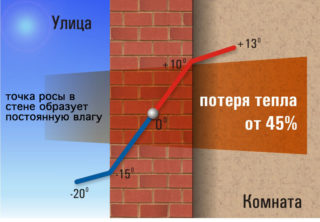
In order for the heat efficiency of the house to be on top, you need to avoid such errors:
- Use sheets with a lower density. This reduces the thermal insulation performance by 2–3 times, which can be seen already in the first 7–10 years of operation.
- Use of incompatible materials. If during construction materials that are dangerous for the foam structure are used, for example, paint and varnish coatings or liquids containing solvents, this will cause the panels to break.
- Incorrect installation. If you leave a gap between the wall and the thermal insulation coating, the dew point will shift into it. The wall will inevitably absorb condensate, which will greatly reduce thermal protection.
When choosing plates, it is necessary to take into account the grade of the material, which will allow you to purchase an option that is suitable in strength and not leave the estimate.
Analog materials
Sheet penoplex has analogues, for example, heatplex. Both materials are similar in quality and are superior to polystyrene, with the exception of vapor permeability.
The building material "Technoplex" is more frost-resistant, it can withstand minus 70 degrees without destroying the structure, in other respects it is similar to penoplex, but it costs more.
"Polyplex 2000" is another insulation made from extruded polystyrene foam. It has better soundproofing properties than simple foam, but the price is higher. For work in the loggia or on the balcony, you can choose the foil option - penotex.
The use of foam plastic as an insulating material can significantly save on heating costs in the cold season and reduce heat loss inside the house. If you choose a suitable brand, follow all instructions for installation and operation, the insulation layer will retain positive qualities for many years.
